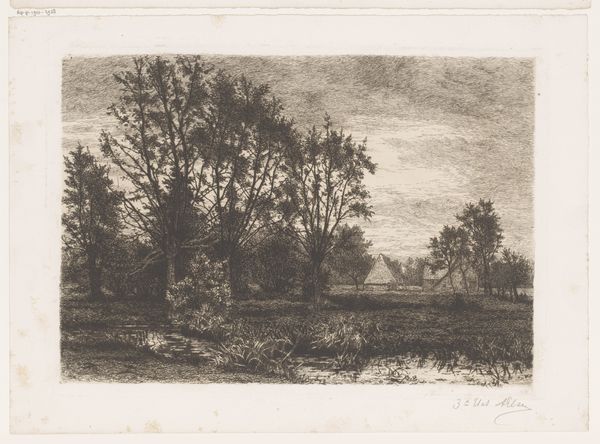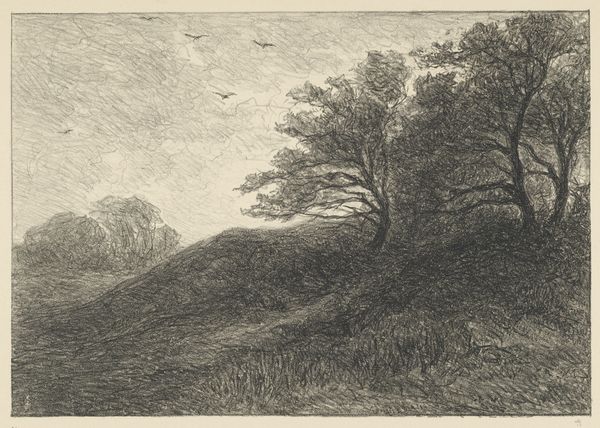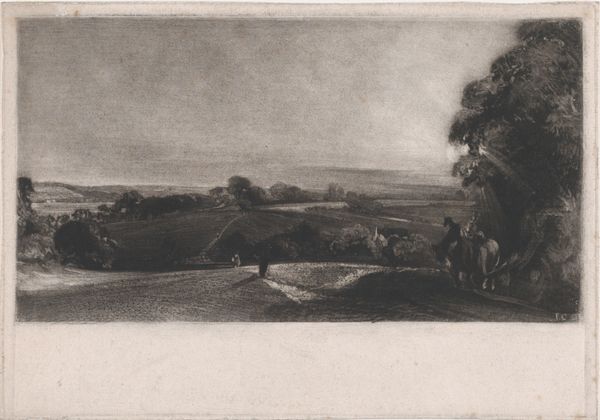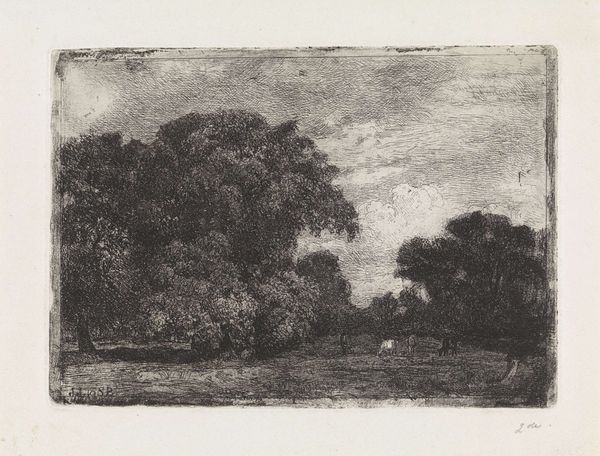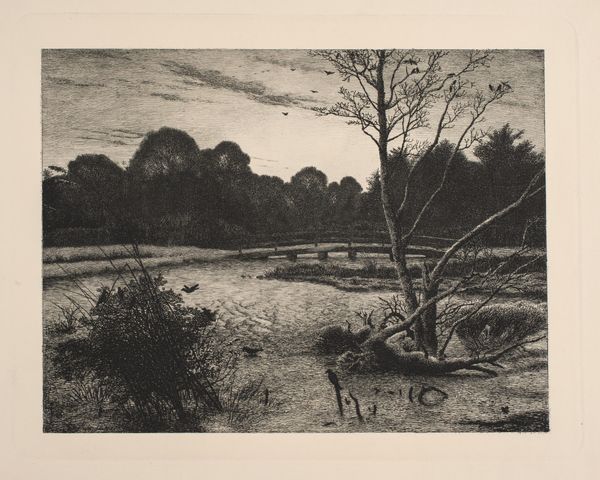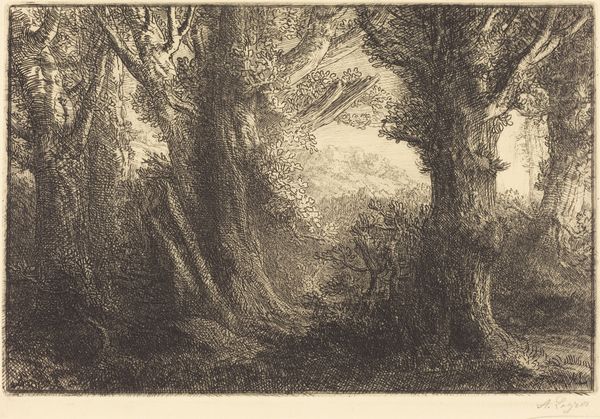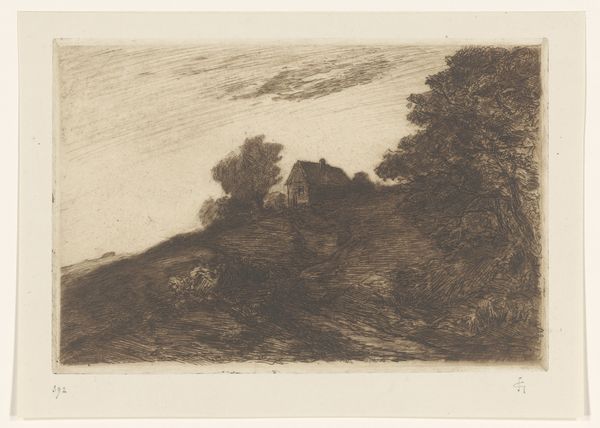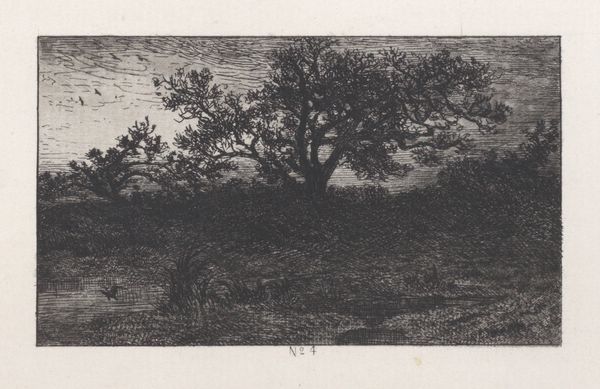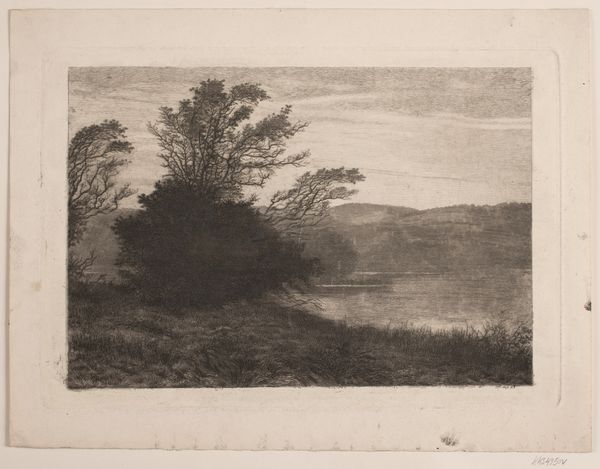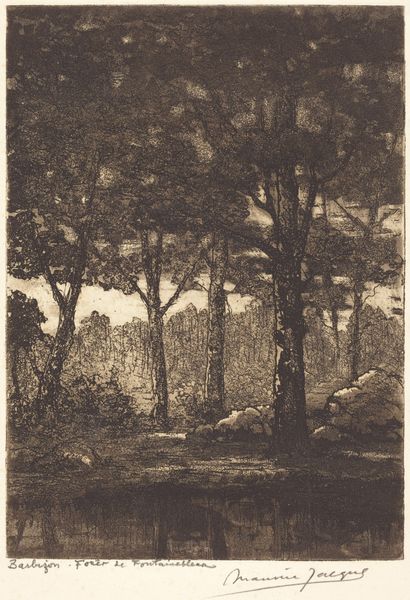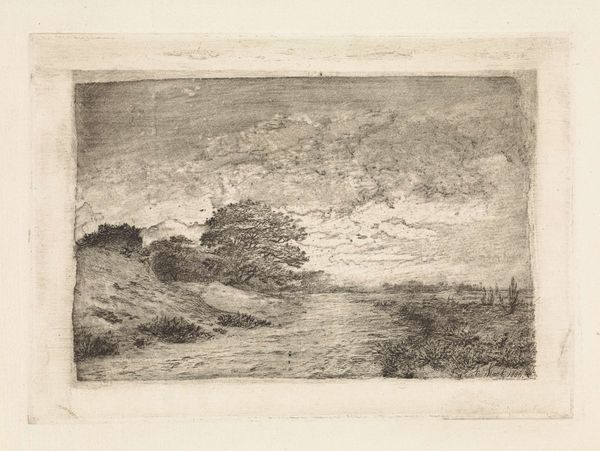
Dimensions: 145 mm (height) x 182 mm (width) (plademål)
Curator: Let's turn our attention to this etching from 1893 by Louise Ravn-Hansen. It's entitled "Måneskin," which translates to "Moonshine." Editor: Immediately, I’m struck by the overall tonality. The heavy, dark strokes against the lightness of the moon create such a palpable sense of night, really capturing that luminescence we experience under a full moon. Curator: Absolutely. Considering the time it was created, late 19th century Denmark, it reflects a growing national romanticism. This was a period of intense cultural self-reflection. Ravn-Hansen, like many artists, was interested in capturing the essence of the Danish landscape, intertwining it with a sense of cultural identity. Editor: I see that reflected, quite literally, in the lines. Notice how the horizontality of the landscape contrasts with the verticality of the trees, almost a visual metaphor for stability meeting aspiration. And that moon, a perfect circle, punctuates the entire composition, drawing the eye and acting as a point of orientation. Curator: Her use of etching is so interesting here too. Printmaking in this period was experiencing a revival as artists were looking for mediums that offered reproducibility to a wider audience, and simultaneously an ability to explore unique textures and tonal depths. "Måneskin," because it captures a universal, romantic image through print, touches on some important sociopolitical dynamics. Landscapes were not simply pretty things, but symbols. Editor: You know, watching the moon illuminate the night sky has, and perhaps will always be, a near-universal experience. It also touches on temporality, the continuous but never-ending cycle of day turning to night. The deep shadows are evocative here, really pushing the drama inherent in such a scene. Curator: I find it really compelling that a woman artist, working in this specific context, engaged with these traditionally "masculine" landscape subjects. This work speaks volumes about the quiet revolutions happening within the artistic world. Editor: Well, it gives me much to think about regarding the stark lines against soft shading. Thank you for helping me understand that this scene’s composition touches upon much more than simply a scene! Curator: And for me, this dialogue reminds us of the political weight that landscape carries.
Comments
No comments
Be the first to comment and join the conversation on the ultimate creative platform.
